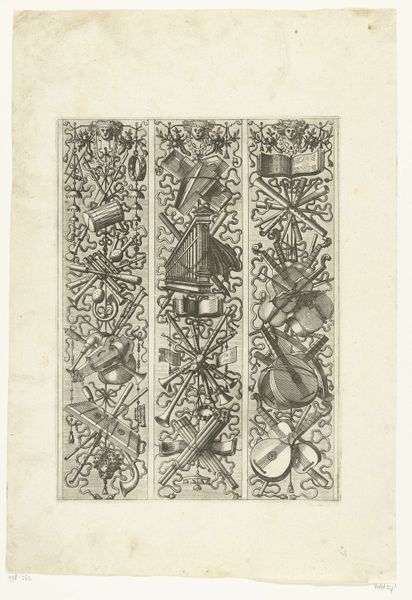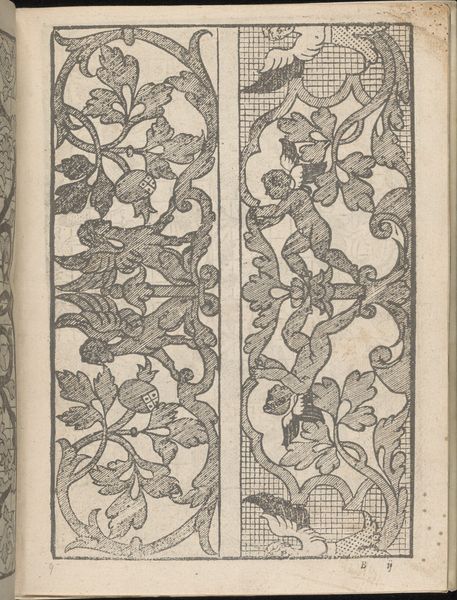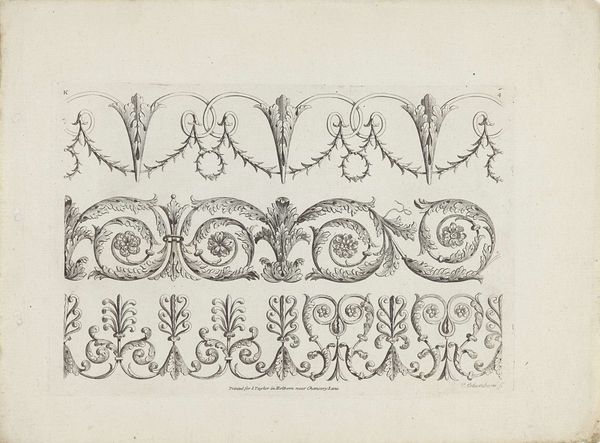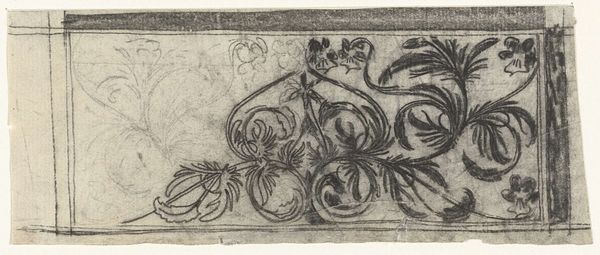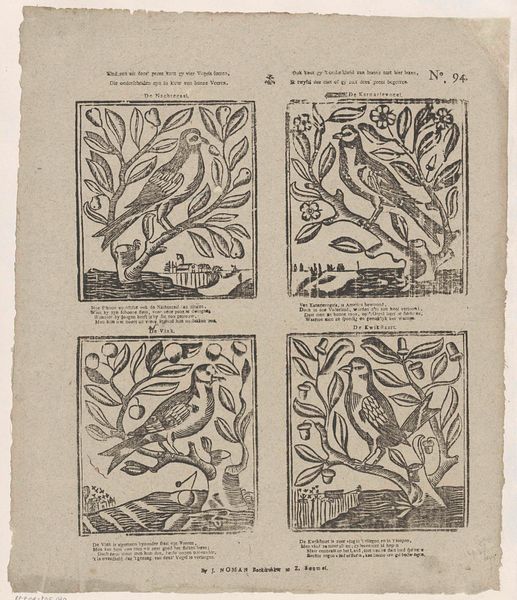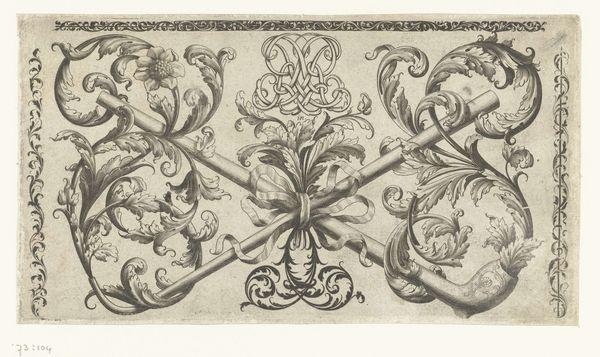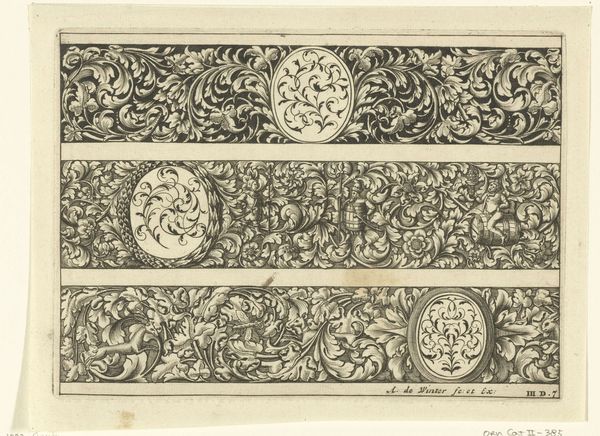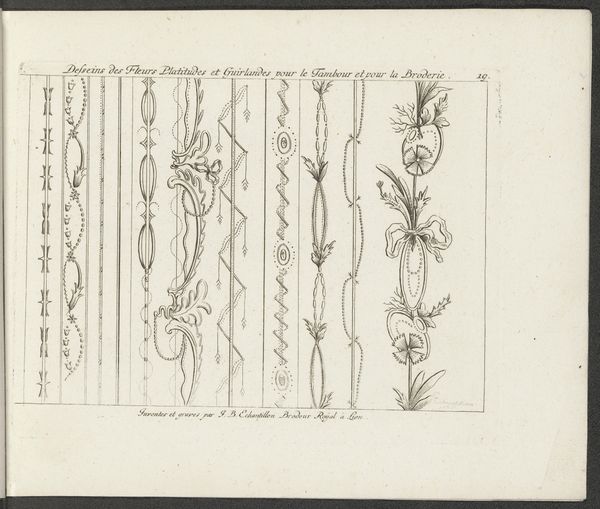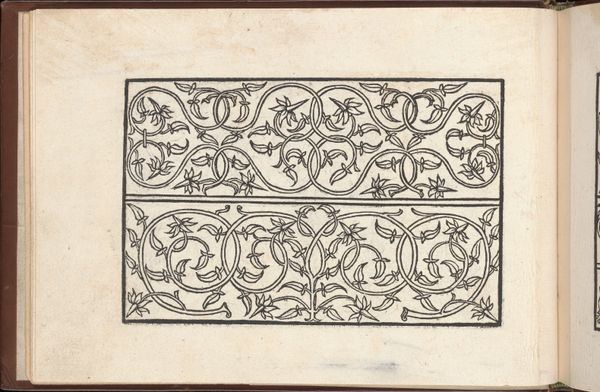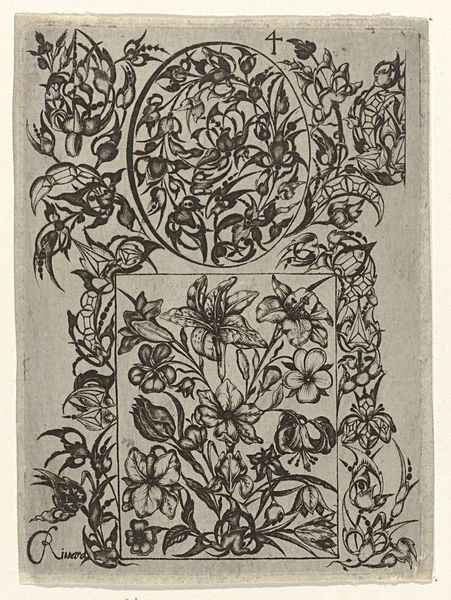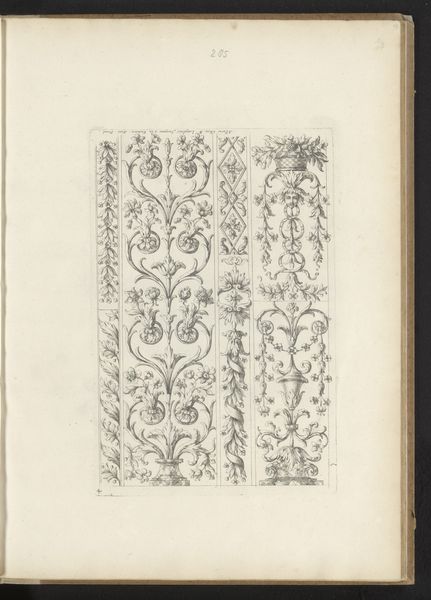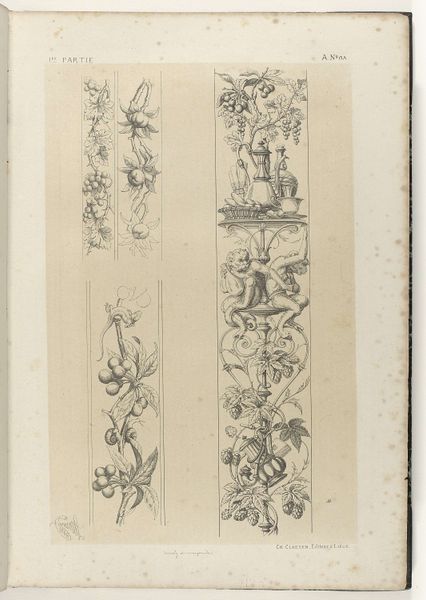
print, engraving
# print
#
northern-renaissance
#
decorative-art
#
engraving
Dimensions: height 185 mm, width 248 mm
Copyright: Rijks Museum: Open Domain
Editor: So, here we have "Four Vertical Trophies with Musical Instruments," an engraving from 1572 by Johannes or Lucas van Doetechum. There’s something very precise about it, yet the collection of instruments feels almost chaotic in each panel. How do you interpret this work, considering the time it was created? Curator: This engraving speaks volumes about the social and political climate of the late Renaissance. The meticulous detail, characteristic of Northern Renaissance art, served a purpose beyond mere decoration. How might we see these "trophies" of instruments, not as celebratory, but perhaps symbolic of something deeper within the cultural anxieties of the time? Editor: That's a fascinating perspective! I guess I just saw them as decorations, but could the arrangement or choice of instruments be making a statement? Curator: Exactly. Think about the Reformation, the rise of humanism, and the increasing tensions within the social structure. Each instrument carries its own cultural weight and might represent a different voice or perspective vying for dominance. The ‘chaos’ you observed might mirror the discordant state of European society. What role might music have played then, considering its potential for both harmony and disruption? Editor: I hadn't thought about it like that at all! It challenges the notion of the Renaissance as simply a ‘rebirth’ and reminds me to consider its internal conflicts. Curator: Indeed. It’s crucial to engage with art history not just as a timeline of styles but as a reflection of ongoing social negotiations. What do you take away from seeing this piece in a new light? Editor: I see now how important it is to analyze art considering power dynamics. This piece can open up interesting intersectional dialogues. Thank you for expanding my views. Curator: My pleasure! This engraving reminds us of the power of art to reflect and challenge social norms, encouraging a richer, more nuanced view of history.
Comments
No comments
Be the first to comment and join the conversation on the ultimate creative platform.
